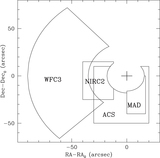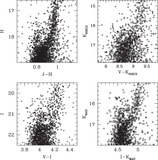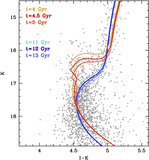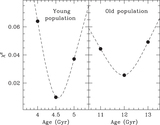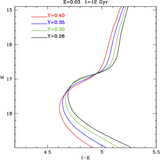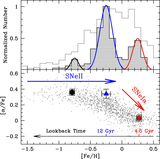Image Details
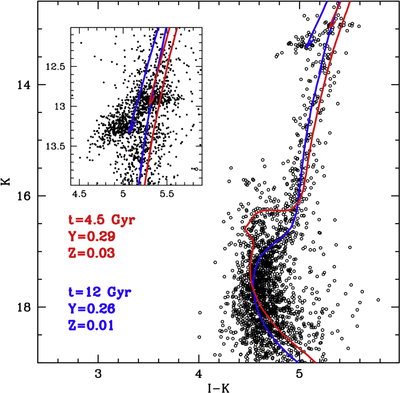
Caption: Figure 3.
Top panel: differential reddening corrected (K, I–K) CMD of Terzan 5 obtained by combining the deepest VLT-MAD K-band and HST-ACS I-band images of a relatively small (∼600 arcsec2) region, located southeast from the center, where differential reddening is the least and the most homogeneous. The CMD clearly shows the presence of two distinct MS-TO/SGBs, indicative of two stellar sub-populations with different ages. Indeed, in order to reproduce both the turnoff regions and the locations of the red clumps, two isochrones Girardi et al. (2002) computed with the observed metallicity and assuming significantly different ages are needed: the main (sub-solar) population of Terzan 5 is well reproduced adopting a mass fraction of heavy elements Z = 0.01 ([Fe/H] = −0.3 dex), a helium mass fraction Y = 0.26 and an age t = 12 Gyr (blue line); the super-solar component requires Z = 0.03 ([Fe/H] = +0.3 dex), Y = 0.29, and t = 4.5 Gyr (red line). In order to better appreciate the agreement between the isochrones and the data at the red clump level, the inset shows a zoomed CMD, with all the measured stars plotted (with no selections).
Copyright and Terms & Conditions
© 2016. The American Astronomical Society. All rights reserved.


